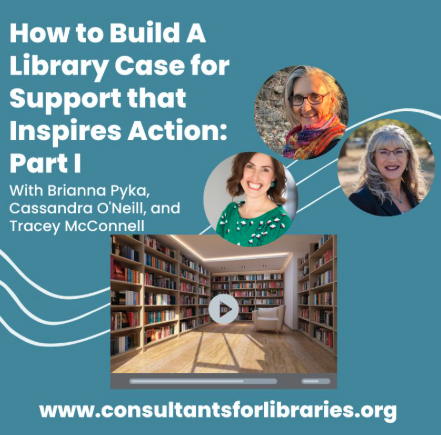Funding Potential: Crafting a Compelling Case Statement for Your Library
- 3 mins
In the realm of fundraising for libraries, the efficacy of a case statement cannot be overstated. It serves as the bedrock, the persuasive narrative that galvanizes support from individuals, businesses, and foundations. A well-crafted case statement encapsulates the essence of a library, its mission, vision, and the urgent need for financial backing. However, not all libraries harness the full potential of a case statement, leading to fundraising challenges and missed opportunities.
A case statement or mini case statement is a written rationale to support a library and should include all details regarding a major capital campaign, fundraising initiative or program which is soliciting private contributions from individuals, businesses and foundations.
Imagine a scenario where a library struggles to secure donations, perplexed by the lack of support despite its valuable contributions to the community. Often, this can be traced back to a deficient or non-existent case statement. Without a clear articulation of the library's significance and impact, potential donors remain unaware of the compelling reasons to invest
Other times, case statements are completed, but not tested with their constituents, donors or members, which still leaves your messaging unclear or flat. Or other times they are created but do not change with the growth and development of the library. A case statement should be reviewed every six months toa year to be sure it is up to date.
Here are a set of questions/topics that should be answered in your case statement:
- Who are we? Who do we serve and why? This is the history and background of the library.
- What do we do that is routine? What is extraordinary? Explain the mission and vision.
- Do we have an emotional hook and how do we best use it to attract our prospective donors?
- Who are we now? What is our current position in terms of status and impetus for improvement?
- How do current facilities serve the library? Are there necessary updates? What is the timing?
- What is the status of the equipment used to run the library? Are upgrades needed?
- Describe your programs. Who does the program serve? Are there success stories or results from programs that can be shared?
- What is the staff makeup of the library team? Are there staff needs? If so, what are they and why are they needed?
- What is the current operating budget from a high level?
- Outline the new operating budget following capital construction or a major expansion if this is your goal.
- What is the necessary financial support needed? Why is it urgent? There must be a clear and realistic need outlined.
- Where does your library want to be and when? What are your future goals? What would happen if the library did not exist? Be sure to sell your services.
Be sure to think about:
- Whether inserts could be used to save money on overall printing for items that change often
- How the mini case statement/case statement will be produced
- Can you design it in house with tools like Canva or do you need to identify graphic design support?
The case for support or case statement should be of a length, which is necessary to explain the full rationale of the campaign, project, or general overview of the library. Organize your case in a way that seems appropriate to you. In most instances, excerpts from your annual report will suffice well for financial information. Including financial information is one of the most important elements. A summary of income and expenses is a good place to start.
You can always create a shortened executive summary or brochure, but never assume your donors will not want to read the material and shorten it from this assumption. Many individuals require this sort of credibility and detail in today’s more competitive fundraising environment.
Tip! Put yourselves in the shoes of your top prospective donors. Would your case be compelling and answer all of the key questions you would have if you were being asked for a $1 Million gift for your library?
Ultimately, the case statement serves as a beacon, illuminating the path towards sustainable funding and ensuring the library's continued impact. By aligning with donor expectations and presenting a compelling case, libraries can unlock their full fundraising potential and secure the support needed to thrive.



